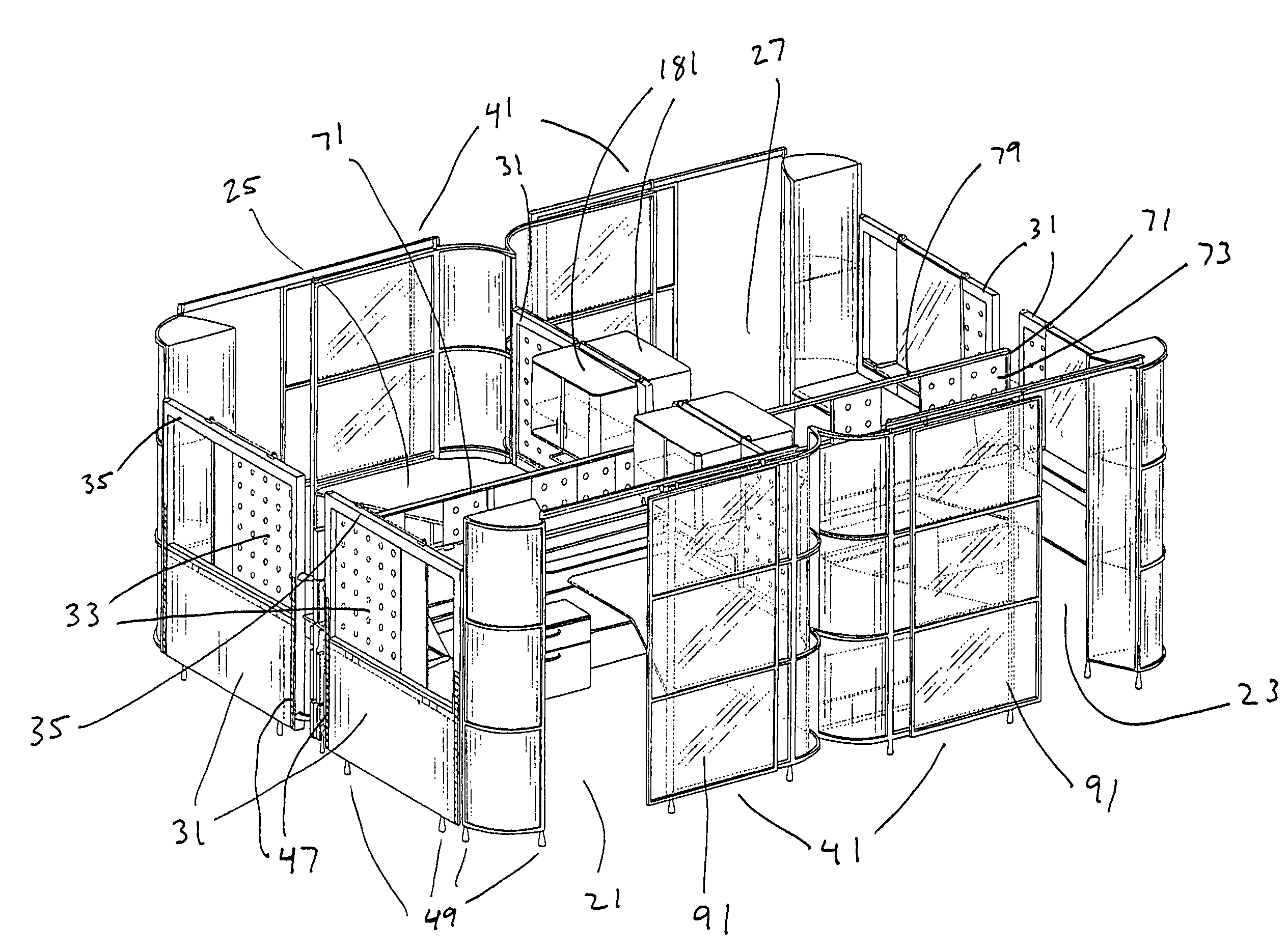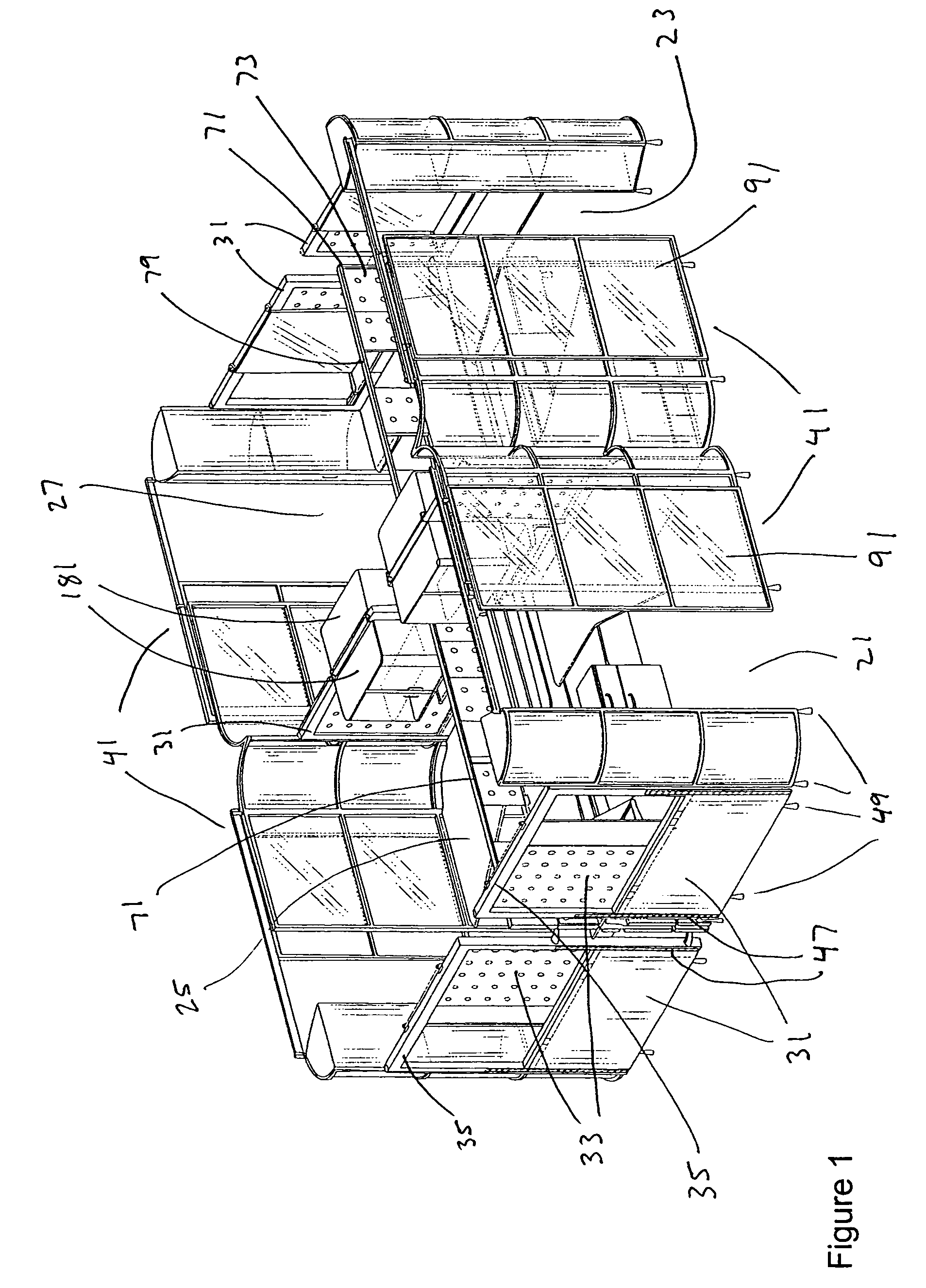Work space management system
a work space and management system technology, applied in the field of work space management system, can solve the problems of hindering free and spontaneous communication, affecting the privacy of private offices, and affecting the work environment, so as to improve the orientation of workers, improve privacy, and improve the effect of user control over accessibility
- Summary
- Abstract
- Description
- Claims
- Application Information
AI Technical Summary
Benefits of technology
Problems solved by technology
Method used
Image
Examples
Embodiment Construction
[0069]The invention is described with reference to the drawings. The relationship and functioning of the various elements of this invention are better understood by the following detailed description. However, the embodiments of this invention as described below are by way of example only, and the invention is not limited to the embodiments illustrated in the drawings.
[0070]An overall view of an embodiment of the present invention is shown in FIG. 1. The system includes a spine wall 71 which is common to work areas 21, 23, 25, and 27. Side walls, or wing walls, 31 extend out from the spine wall 71. Other walls, or street side walls, 41 are adjacent to the walkway between work areas and are on the opposite side of the work area from the spine wall. The wing walls 31, street side walls 41, and spine walls 71 are supported by feet 49. Positioned in the street side wall 41 is a door 91. Although the embodiment in FIG. 1 shows four work areas, the scope of the invention contemplates any ...
PUM
 Login to View More
Login to View More Abstract
Description
Claims
Application Information
 Login to View More
Login to View More - R&D
- Intellectual Property
- Life Sciences
- Materials
- Tech Scout
- Unparalleled Data Quality
- Higher Quality Content
- 60% Fewer Hallucinations
Browse by: Latest US Patents, China's latest patents, Technical Efficacy Thesaurus, Application Domain, Technology Topic, Popular Technical Reports.
© 2025 PatSnap. All rights reserved.Legal|Privacy policy|Modern Slavery Act Transparency Statement|Sitemap|About US| Contact US: help@patsnap.com



